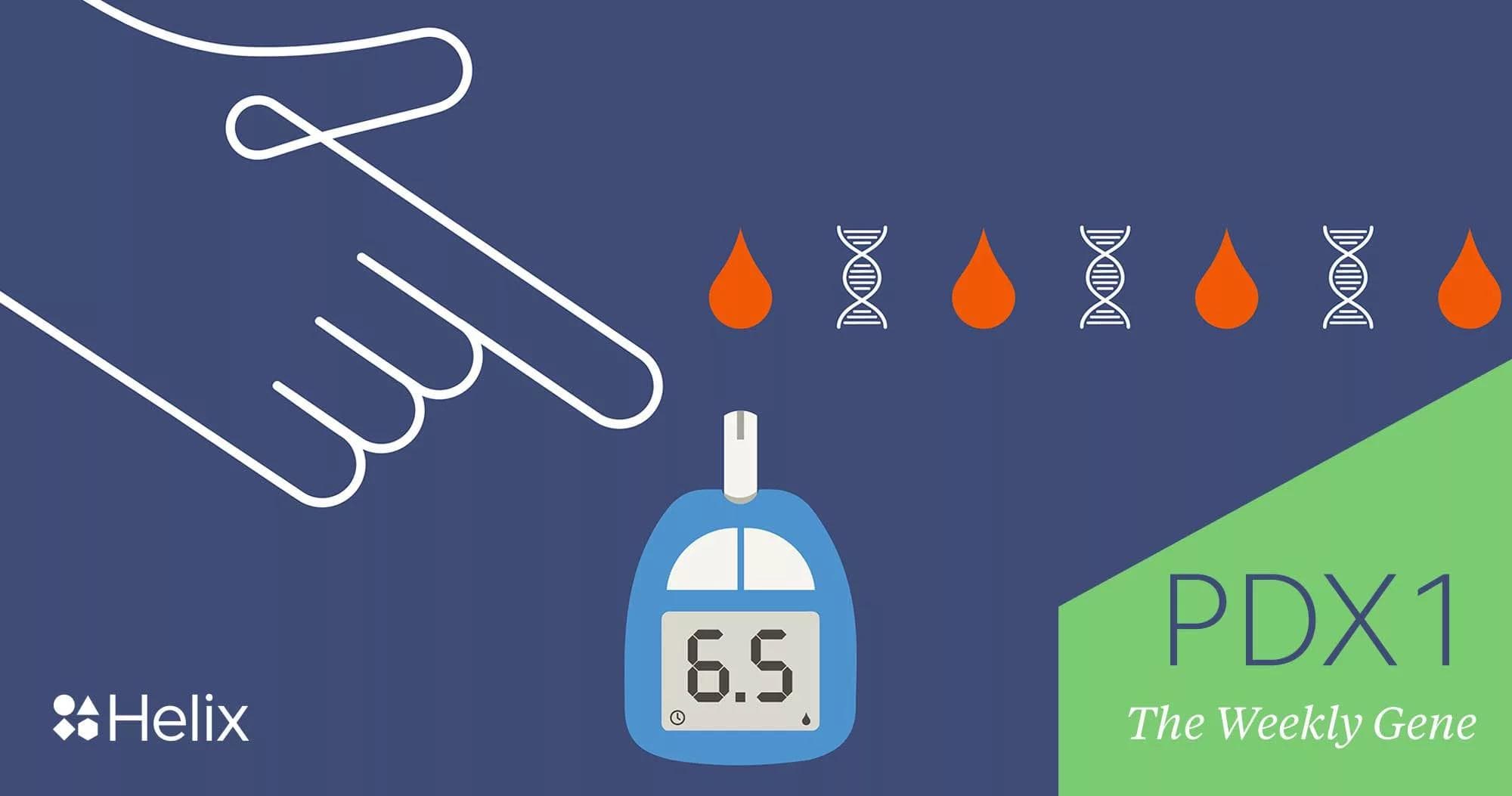The pancreas can’t exist without this gene

Welcome to The Weekly Gene, a blog series brought to you by Helix that introduces a different human gene each week. We’ll share important facts, relevant research, and how these genes might be related to certain conditions and traits. It’s a great way to build your DNA vocabulary, learn more about the code that makes all of us unique, and find a path to the genetic insights that are important to you.
Want to know more about a specific gene? Let us know by tweeting @my_helix with #WeeklyGene.
November is Diabetes Awareness Month. There’s a good chance that diabetes, in one of its several forms, affects you or someone you love—roughly 9-10% of Americans have the disease. This staggering figure reflects an urgent need to understand more about how diabetes develops, and how best to treat it.
Following decades of research, scientists have found that genetics can influence a person’s predisposition for diabetes; in some cases, it can even be the primary factor driving disease development. Diabetes is most simply described as a disease where the body has trouble maintaining healthy blood sugar levels. In humans, the pancreas is responsible for the regulation of blood sugar levels. But when changes occur in the DNA that affect pancreatic function, diabetes can develop. One such change occurs in a gene known as PDX1.
The development of the human body is a fascinating process: somehow, a small set of cells gives rise to a fully formed human being. What causes these cells to take on different identities—skin cell, liver cell, heart cell, and so on—is an intensely studied topic. Knowing how the body develops can help us understand why certain diseases occur, and may even lead to new cures using regenerative medicine. For example, understanding how the pancreas develops might allow us to one day cure certain forms of diabetes. Science isn’t quite there yet, but current research has revealed links between some genes involved in pancreas development and diabetes.
During embryonic growth, the pancreas develops from a mass of cells that also gives rise to other organs including the liver and gall bladder. The pancreas regulates blood sugar levels (among other functions) by secreting hormones into the bloodstream. These hormones can stimulate sugar removal from the blood (insulin) or sugar release into the blood (glucagon). This is a complex process that requires the pancreas to have specialized cell types that are capable of sensing sugar and releasing the appropriate hormone. The development of these specialized cells is controlled, in part, by the PDX1 gene.
PDX1 binds to the DNA, and promotes the expression of genes that are integral to pancreatic cell development and function. When embryonic cells begin to make PDX1, it’s the first step in committing those cells towards a pancreatic identity. This gene continues to be used even after the organ develops and actively helps regulate the production of insulin. Variations in the DNA sequence coding for PDX1 can have significant effects on pancreatic function. One of these known variants leads to a non-functional PDX1 protein, which causes a type of diabetes known as Maturity Onset Diabetes in the Young (MODY).
MODY is a rarely diagnosed form of diabetes caused by alterations in the DNA coding for key sugar-regulating proteins. There are multiple forms of MODY which can be caused by one or more variations that can occur in 13 different genes. The effect of these variations can differ based on the specific gene(s) where they occur. If a person carries one copy of the altered PDX1 gene, they will likely have trouble producing enough insulin in response to elevated blood sugar levels. More severe problems occur if a person inherits two copies of the altered PDX1 gene, including the complete loss of a pancreas, although this is a very rare circumstance. When only one copy of the PDX1 gene is altered, the body can compensate for the lower insulin production rate until approximately 30 years of age, at which point most people with a PDX1 variant are identified as diabetic.
MODY may be present in as many as 5% of those currently diagnosed with diabetes. But commonly, they aren’t aware that their diabetes is MODY because the symptoms closely resemble characteristic features of Type 1 and Type 2 diabetes. Genetic testing can help differentiate between MODY and other types of diabetes. Importantly, MODY is a heritable form of diabetes which means that it can run in families. Individuals who test positive for MODY are encouraged to discuss this with family members, as they may have also inherited DNA variations associated with diabetes.
It is important for those with MODY to be aware they’re affected by it, because they may be able to start treatment regimens that manage their symptoms more effectively and have minimal impact on their quality of life. In some cases, MODY may be treated with oral therapeutics which can be preferable to the daily injections required for insulin therapy.
The most important thing to remember about diabetes—not just during Diabetes Awareness Month, but every month of the year—is that it’s manageable. Modern treatment plans and genetic testing can help a great deal, and researchers continue to make groundbreaking discoveries. Hopefully, diabetes will one day be cured for the millions who are affected by it. In the meantime, knowledge is power.